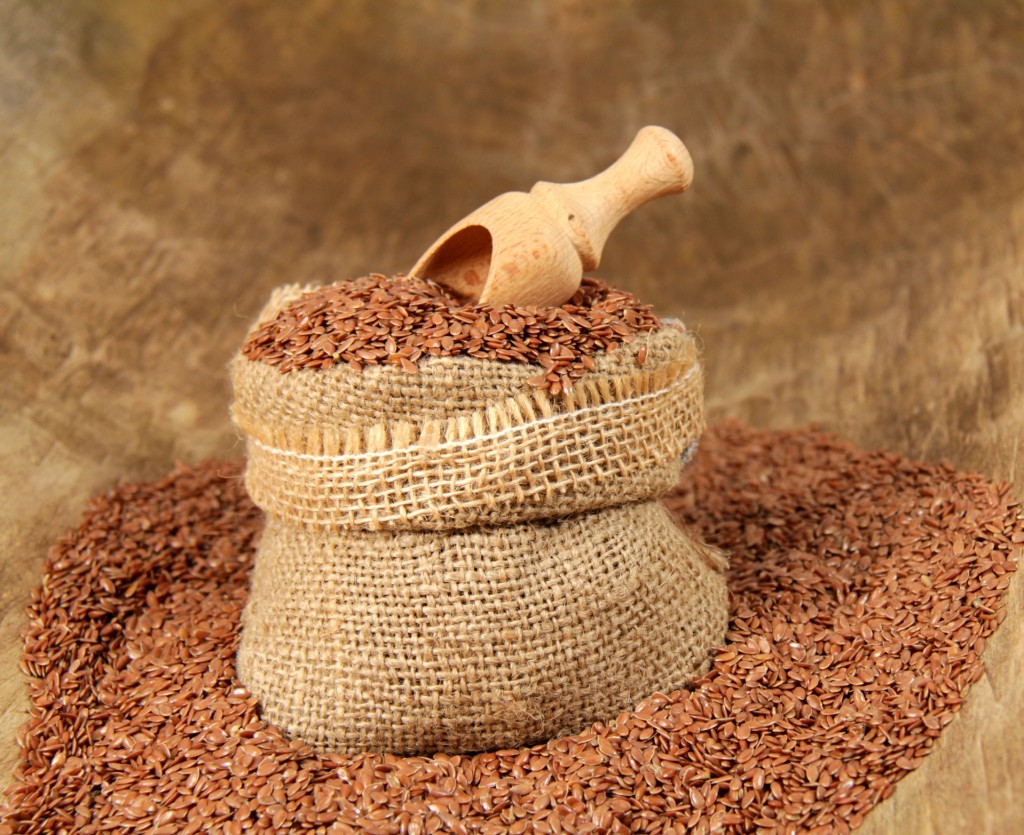Flaxseed is also commonly known as linseed or Alsi. They are slightly larger than sesame seeds and have a hard shell that is smooth and shiny. Their color ranges from deep amber to reddish brown depending upon variety. They pack powerful nutritious punch in a small package. While whole flaxseeds feature a soft crunch, the nutrients in ground seeds are more easily absorbed.
Imortance & Benefits Of Flax Seed:
As scientifically proven, it is a super food – so packed with nutrients and fiber that it’s worth including in the diet every day. It is rich in omega-3 fatty acids, which are important for overall brain health as well as for preventing memory loss and depression. It also contains lignans, which may have antioxidant actions and may help protect against certain cancers. In a Flax Seed Benefits study carried out, prostate cancer patients who added about 3 heaped tablespoons of ground flaxseed daily to their diet, had more slowly-dividing tumor cells than men who did not follow this diet, after about 5 weeks. There was a similar study carried out of woman awaiting surgery for breast cancer though not everyone agrees on this issue. It is also high in most of the B vitamins, magnesium, and manganese. Let us have a look at some of the benefits for women: • It can lower cholesterol and triglyceride levels as much as 25 to 65 percent, especially in women. • It brings great help during the menopause. • Eating it daily stabilizes blood sugar and can reduce the effects of diabetes. • Daily dietary intake offers protection against bone loss, may increase bone density resulting in reduced risk of osteoporosis. • It also improves the quality of hair, nails, and skin. • It can also help you to lose weight or bulk up. • It lowers blood pressure and prevents arthritis and cancers. • It also really helps the digestive system creating an ease of bowel movement combating constipation.
Comparision Of Flexseed With Other Sources of Omega-3 Fatty Acid Flax seed, walnuts, salmon, enriched eggs, tofu are all good sources of omega-3 fatty acids. As we know, many people like people with hives are allergic to egg proteins and are not allowed to eat eggs. Some people are allergic to fish and other sea foods and they may find it difficult to incorporate Omega-3 in their diet. So Flex seed tops the list among the available food sources for omega-3 fatty acids. They are very inexpensive. They store easily for long periods until ground. Two tablespoons of ground flax contain 3.51 grams. Walnuts provide 2.27 grams in a quarter cup. Salmon has slightly more than 2 grams in 4 ounces. One cup of cooked soybeans offers 1 gram. The same size serving of tofu gives just over 1/3 gram, as do 4 ounces of scallops.
Using Flex Seed In Diet: Now a days, flex seeds are easily available in the market. You can search for it in the organics section of the grocery store or any health food store. The light, nutty taste of flax seed enhances the flavor of food, and adds nutritional value to your diet. It may be eaten on its own, sprinkled on cereal, popcorn, and salads, or added to oatmeal, yogurt, and blender drinks. Adding them to baked goods adds flavor, extra texture, and good nutrition. Milled flax seed may be baked into a variety of products including breads, pancakes, bagels, muffins, and cookies. Roasted and coarsely ground flex seed can be easily sprinkled on top of any raita. It can be also used in multispeed mukhwaas with white and black sesame seeds. Another interesting way is to use them as a chutney powder with Bengal gram Dal (Chana dal), Black gram Dal (urad dal), Coriander seeds and Cumin seeds.




